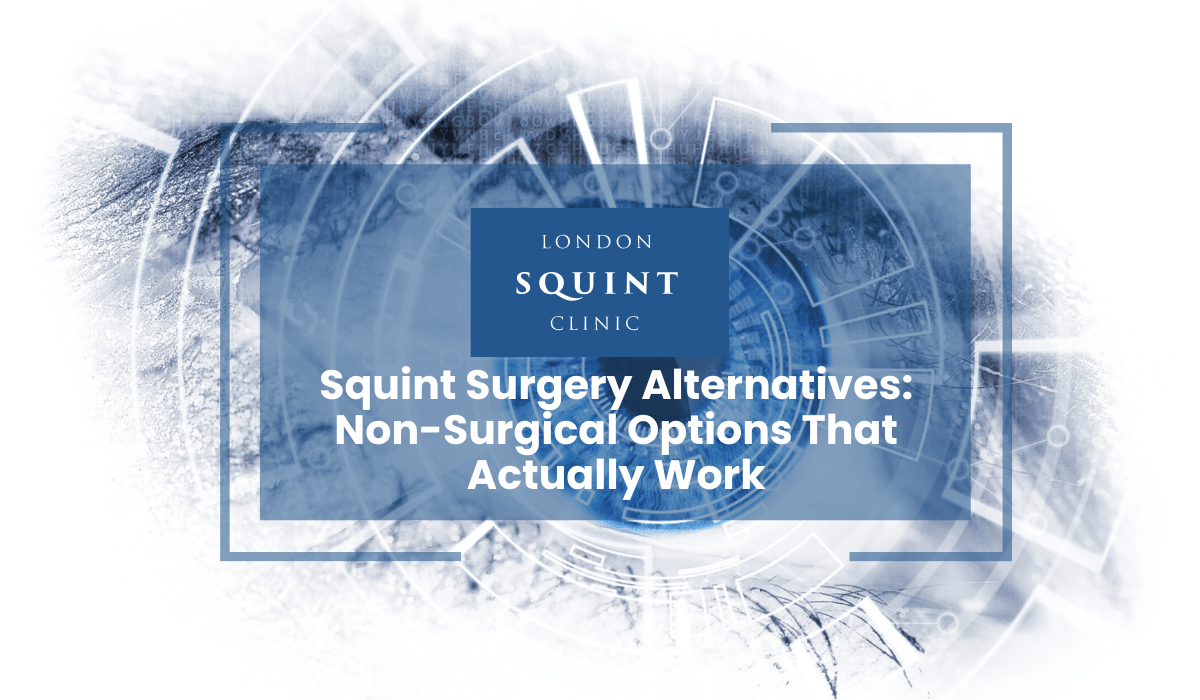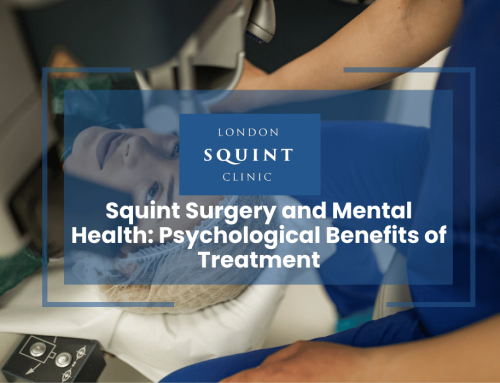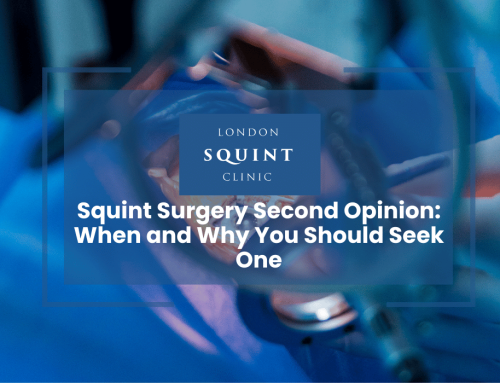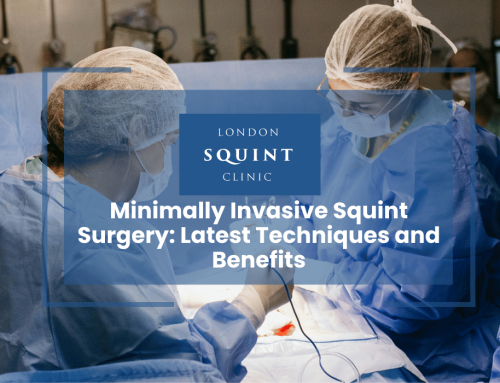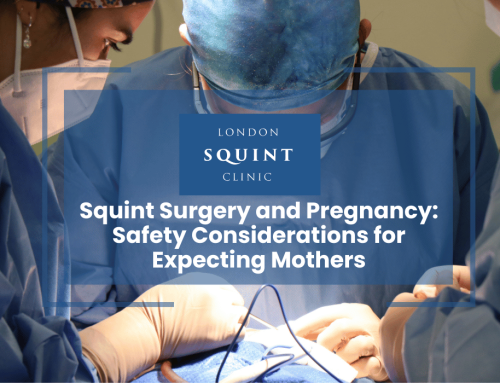Squint Surgery Alternatives: Non-Surgical Options That Actually Work
Essential Points to Remember About Non-Surgical Squint Treatment Options
- Squint, or strabismus, is a condition where the eyes do not align properly, leading to vision problems if left untreated.
- Non-surgical treatment options for squint include vision therapy, prism glasses, Botox injections, and eye patching.
- Vision therapy uses eye exercises and activities to improve eye coordination, focusing ability, and binocular vision.
- Prism glasses shift the image seen by the misaligned eye, allowing the brain to fuse images from both eyes into a single, clear picture.
- Botox injections can temporarily weaken overactive eye muscles, while eye patching promotes equal visual development in both eyes.
- Combining non-surgical treatments may be recommended for optimal squint management, depending on individual factors.
- Regular monitoring and follow-up care are essential to assess progress and make necessary adjustments to treatment plans.
- In some cases, surgery may be necessary to achieve the best possible outcome for squint correction.
Here is the blog post content with the requested sections and formatting:
Table of Contents
- What is Squint and How Does it Affect Vision?
- Understanding the Causes and Types of Squint
- Can Squint Be Treated Without Surgery? Exploring Non-Surgical Options
- Vision Therapy for Squint: Exercises and Techniques to Realign Eyes
- Prism Glasses: How They Work and When They’re Effective for Squint
- Alternative Treatments for Squint: Botox Injections and More
- Combining Non-Surgical Treatments for Optimal Squint Management
- When is Surgery Necessary for Squint? Knowing Your Options
What is Squint and How Does it Affect Vision?
Squint, also known as strabismus, is a condition where the eyes do not align properly. One eye may turn inward, outward, upward, or downward while the other eye focuses normally. This misalignment can cause double vision, reduced depth perception, and visual confusion. Squint often develops in childhood but can also occur in adults due to injury, stroke, or other neurological conditions. If left untreated, squint can lead to amblyopia or “lazy eye” in children, where the brain suppresses vision from the misaligned eye. Prompt treatment is crucial to prevent vision loss and promote proper visual development.
Understanding the Causes and Types of Squint
Squint can have various causes, including genetics, muscle imbalances, nerve disorders, or brain abnormalities. In some cases, the exact cause may be unknown. There are several types of squint, classified by the direction of eye misalignment:
- Esotropia: One eye turns inward towards the nose
- Exotropia: One eye turns outward away from the nose
- Hypertropia: One eye turns upward
- Hypotropia: One eye turns downward
Squints can be constant or intermittent and may alternate between eyes. Accommodative esotropia is a common type in children, where the eyes turn inward when focusing on close objects. Understanding the specific type and cause of squint is essential for determining the most appropriate treatment approach.
Can Squint Be Treated Without Surgery? Exploring Non-Surgical Options
While surgery is often the most effective treatment for squint, there are non-surgical options that can help manage the condition, especially in mild cases or as a complementary approach. These conservative treatments aim to improve eye alignment, strengthen eye muscles, and promote binocular vision. Non-surgical options for squint include:
- Vision therapy: Eye exercises and activities to improve eye coordination and alignment
- Prism glasses: Special lenses that redirect light to compensate for eye misalignment
- Botox injections: Temporary paralysis of overactive eye muscles to improve alignment
- Eye patching: Covering the stronger eye to encourage use of the weaker eye
The effectiveness of non-surgical treatments depends on factors such as the type and severity of squint, age of the patient, and underlying cause. A comprehensive evaluation by a squint specialist is necessary to determine the most suitable approach for each individual case.
Vision Therapy for Squint: Exercises and Techniques to Realign Eyes
Vision therapy is a non-surgical treatment that uses a series of eye exercises and activities to improve eye coordination, focusing ability, and binocular vision. For squint patients, vision therapy aims to retrain the brain and eye muscles to work together effectively, promoting proper alignment. Common techniques used in vision therapy for squint include:
- Pencil push-ups: Focusing on a pencil as it moves closer to the nose to improve convergence
- Brock string: Using a string with colored beads to practice eye coordination and depth perception
- Barrel cards: Aligning images on cards to improve eye teaming and fusion
- Computerized vision therapy: Interactive software programs that provide visual feedback and training
Vision therapy sessions are typically conducted in-office with a trained optometrist or orthoptist, with additional home exercises prescribed for daily practice. The length and frequency of therapy depend on the individual’s progress and response to treatment. While vision therapy can be effective for some patients, it may not fully correct squint in all cases and may be combined with other treatments like prism glasses or surgery for optimal results.
Prism Glasses: How They Work and When They’re Effective for Squint
Prism glasses are a non-surgical option for managing squint by altering the way light enters the eyes. The prism lenses shift the image seen by the misaligned eye, allowing the brain to fuse the images from both eyes into a single, clear picture. This can help reduce double vision, eye strain, and abnormal head postures associated with squint.
Prism glasses are most effective for patients with small-angle squints or those with a residual deviation after surgery. They can also be used as a temporary measure before surgery or in cases where surgery is not recommended. The amount and direction of prism correction are determined by a specialist based on the type and magnitude of the squint.
While prism glasses can improve visual comfort and function, they do not correct the underlying muscle imbalance causing the squint. Regular follow-up visits are necessary to monitor the eye alignment and adjust the prism strength as needed. In some cases, prism adaptation may occur, where the eyes gradually adjust to the prism and the squint angle increases over time, requiring a higher prism correction.
Alternative Treatments for Squint: Botox Injections and More
In addition to vision therapy and prism glasses, there are other non-surgical treatments that can help manage squint. Botox injections, for example, can be used to temporarily weaken overactive eye muscles, allowing the eyes to align better. The effects of Botox typically last 3-4 months, after which the injection may need to be repeated.
Eye patching is another technique that can be used in conjunction with other treatments. By covering the stronger eye, the weaker eye is forced to work harder, helping to improve its visual acuity and prevent amblyopia. Eye patching is often used in children with squint to promote equal visual development in both eyes.
Other alternative therapies, such as acupuncture and vision training with specialized devices, have been proposed for squint management. However, the evidence for their effectiveness is limited, and they should not replace proven treatments like vision therapy, prism glasses, or surgery when indicated. It is essential to consult with a qualified eye care professional to determine the most appropriate treatment plan for each individual case.
Combining Non-Surgical Treatments for Optimal Squint Management
In some cases, a combination of non-surgical treatments may be recommended for the best possible outcome in squint management. For example, vision therapy can be used alongside prism glasses to improve eye coordination and alignment while reducing visual discomfort. Botox injections may be combined with eye patching to promote a more balanced visual input from both eyes.
The decision to combine non-surgical treatments depends on various factors, including the type and severity of squint, the patient’s age and visual development, and their response to individual therapies. A multidisciplinary approach involving ophthalmologists, optometrists, and orthoptists can help create a personalized treatment plan that addresses the specific needs of each patient.
Regular monitoring and follow-up care are essential to assess the progress of non-surgical treatments and make necessary adjustments. In some cases, if the squint does not improve sufficiently with conservative measures, surgery may be recommended to achieve optimal eye alignment and binocular vision.
When is Surgery Necessary for Squint? Knowing Your Options
While non-surgical treatments can be effective for managing some cases of squint, there are situations where surgery may be necessary to achieve the best possible outcome. Squint surgery involves adjusting the eye muscles to improve alignment and is typically recommended when:
- The squint angle is large and causing significant visual problems
- Non-surgical treatments have not provided sufficient improvement
- The squint is causing amblyopia or hindering visual development in children
- The patient experiences persistent double vision or abnormal head postures
There are different surgical techniques used to correct squint, depending on the type and severity of the misalignment. These include recession (weakening) or resection (strengthening) of the eye muscles, transposition (repositioning) of muscles, and adjustable suture techniques that allow for fine-tuning of the alignment after surgery.
The decision to proceed with squint surgery should be made in consultation with a qualified ophthalmologist who specializes in strabismus management. They will assess the individual case, discuss the potential benefits and risks of surgery, and recommend the most appropriate surgical approach. In some cases, a combination of surgery and non-surgical treatments may be advised for optimal results.
Frequently Asked Questions
Can squint be corrected without surgery?
Yes, in some cases, squint can be managed without surgery using non-surgical treatments such as vision therapy, prism glasses, Botox injections, and eye patching. The effectiveness of these methods depends on factors like the type and severity of the squint, the patient’s age, and the underlying cause. A comprehensive evaluation by a squint specialist is necessary to determine the most suitable approach for each individual case.
How effective is vision therapy for treating squint?
Vision therapy can be an effective non-surgical treatment for some patients with squint. It uses eye exercises and activities to improve eye coordination, focusing ability, and binocular vision, aiming to retrain the brain and eye muscles to work together effectively. The success of vision therapy depends on the individual’s progress and response to treatment, and it may be combined with other treatments like prism glasses or surgery for optimal results.
What are prism glasses, and how do they help with squint?
Prism glasses are a non-surgical option for managing squint that uses special lenses to shift the image seen by the misaligned eye, allowing the brain to fuse the images from both eyes into a single, clear picture. This can help reduce double vision, eye strain, and abnormal head postures associated with squint. Prism glasses are most effective for patients with small-angle squints or those with a residual deviation after surgery.
When is squint surgery necessary?
Squint surgery may be necessary when the squint angle is large and causing significant visual problems, non-surgical treatments have not provided sufficient improvement, the squint is causing amblyopia or hindering visual development in children, or the patient experiences persistent double vision or abnormal head postures. The decision to proceed with squint surgery should be made in consultation with a qualified ophthalmologist who specializes in strabismus management.
Can Botox injections help treat squint?
Yes, Botox injections can be used as a non-surgical treatment to temporarily weaken overactive eye muscles, allowing the eyes to align better. The effects of Botox typically last 3-4 months, after which the injection may need to be repeated. Botox injections can be used in conjunction with other treatments, such as eye patching, to promote a more balanced visual input from both eyes.
Is it possible to combine non-surgical treatments for squint?
Yes, in some cases, a combination of non-surgical treatments may be recommended for the best possible outcome in squint management. For example, vision therapy can be used alongside prism glasses to improve eye coordination and alignment while reducing visual discomfort. The decision to combine non-surgical treatments depends on various factors and should be made in consultation with a qualified eye care professional.
Find out if you are suitable for Double Vision Treatment
Not everyone is eligible for double vision surgery.
Find out if you could benefit from this life-changing surgery by taking the quick self-suitability quiz below:
Our most popular procedures

Hello, I’m Nadeem Ali
I’m one of the few eye surgeons in the world with 100% focus on Squint and Double Vision Surgery.
I have 24 years of eye surgery experience, and worked for 13 years as a Consultant at London’s renowned Moorfields Eye Hospital.
In 2023, I left the NHS to focus fully on treating patients from across the world at the London Squint Clinic. You can read more about me here.
There’s lots of information on the website about: squint surgery, double vision surgery and our pricing.
The most rewarding part of my job is hearing patients tell me how squint or double vision surgery has changed their lives. You can hear these stories here.
Mr Nadeem Ali
MA MB BChir MRCOphth FRCSEd(Ophth)
